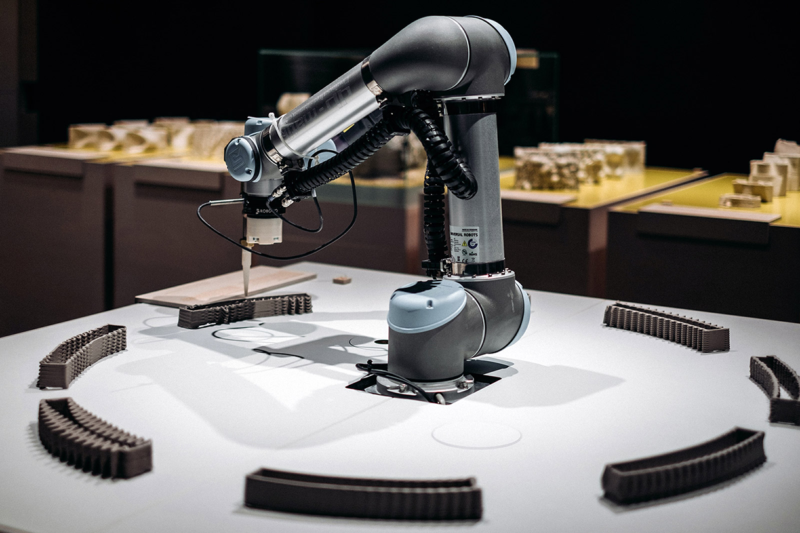
3D printing, once considered a niche technology, is rapidly becoming a transformative force in manufacturing and design. Its ability to create complex, customized, and high-quality products from digital designs has revolutionized industries ranging from aerospace to healthcare. As 3D printing technology continues to evolve, its potential applications are expanding, making it a key player in the future of production and innovation. In this article, we’ll explore how 3D printing is reshaping the world of manufacturing and design and what the future holds for this groundbreaking technology.
1. The Evolution of 3D Printing
3D printing, also known as additive manufacturing, began in the 1980s but has only recently gained widespread adoption due to advances in technology and materials. Originally, 3D printing was used primarily for prototyping, but as the technology evolved, it became a viable option for full-scale production.
The early stages of 3D printing were limited to plastic materials, but today’s printers can work with a variety of materials, including metals, ceramics, and even biological tissues. This versatility has opened up new possibilities for industries looking to innovate in product development and manufacturing.
2. How 3D Printing Is Revolutionizing Manufacturing
3D printing is disrupting traditional manufacturing processes in several ways:
- Cost-effective production: Unlike traditional methods that require expensive molds or tooling, 3D printing allows manufacturers to produce custom parts at a fraction of the cost. This is especially beneficial for small-batch production or one-off designs.
- Reduced waste: Traditional manufacturing often involves cutting away material to achieve the desired shape, leading to waste. 3D printing, on the other hand, builds products layer by layer, using only the material needed. This reduces waste and makes the process more environmentally friendly.
- Faster prototyping and production: With 3D printing, prototypes can be created in a matter of hours or days, significantly reducing the time it takes to go from design to final product. This accelerates innovation and allows for faster iterations of product designs.
- Customization and flexibility: 3D printing makes it possible to create highly customized products, such as personalized medical implants or bespoke consumer goods. This flexibility is revolutionizing industries like healthcare, automotive, and fashion.
These advantages are driving more companies to adopt 3D printing in their manufacturing processes, leading to a future where traditional production methods are complemented—or even replaced—by additive manufacturing.
3. The Role of 3D Printing in Design and Creativity
3D printing is also reshaping the world of design by giving creators unprecedented freedom to bring their ideas to life. Designers are no longer limited by the constraints of traditional manufacturing techniques, which often require compromises in form, function, or material.
Key impacts of 3D printing on design include:
- Complex geometries: 3D printing allows designers to create intricate, complex shapes that would be impossible or too costly to produce using traditional methods.
- Rapid iteration: With 3D printing, designers can quickly test and modify their ideas, allowing for faster innovation and experimentation.
- Mass customization: Designers can create products that are tailored to individual customer preferences, from custom jewelry to personalized home decor.
- Sustainability in design: By reducing material waste and enabling localized production, 3D printing promotes more sustainable design practices.
For architects, artists, and industrial designers, 3D printing has become an indispensable tool for turning ambitious ideas into reality.
4. Industry-Specific Applications of 3D Printing
The impact of 3D printing is being felt across a wide range of industries, each finding new ways to leverage the technology for innovation and efficiency:
- Aerospace: The aerospace industry uses 3D printing to create lightweight, durable parts that reduce fuel consumption and improve efficiency. Companies like Boeing and NASA are already incorporating 3D-printed components into their aircraft and spacecraft.
- Healthcare: 3D printing is revolutionizing healthcare by enabling the production of custom prosthetics, implants, and even organs. Surgeons can also use 3D-printed models to plan complex surgeries, improving patient outcomes.
- Automotive: Car manufacturers are using 3D printing to produce parts, prototypes, and tools more efficiently. The technology allows for the creation of lightweight components that improve vehicle performance and reduce costs.
- Fashion: Designers are using 3D printing to create unique, custom-made garments and accessories. The ability to print clothing that perfectly fits an individual’s body shape is transforming the fashion industry.
- Construction: In the construction industry, 3D printing is being used to create building components and even entire structures. Large-scale 3D printers can produce walls, floors, and other elements in a fraction of the time it takes using traditional construction methods.
As 3D printing continues to advance, its applications across industries will only continue to grow, pushing the boundaries of what’s possible in manufacturing and design.
5. The Future of 3D Printing: Emerging Trends
The future of 3D printing looks promising, with several key trends set to shape the next phase of its evolution:
- Bioprinting: One of the most exciting developments in 3D printing is bioprinting, which involves printing with biological materials to create tissues and organs. Researchers are already making strides toward printing functional human organs, which could revolutionize transplants and regenerative medicine.
- Advanced materials: As 3D printing technology advances, so does the range of materials available. Researchers are developing new materials that are stronger, more flexible, and more sustainable, further expanding the potential applications of 3D printing.
- Distributed manufacturing: 3D printing enables decentralized manufacturing, where products can be printed locally, reducing shipping costs and lead times. This trend could lead to a shift away from mass production in centralized factories to more localized, on-demand production.
- 3D printing in space: NASA and private companies like SpaceX are exploring the use of 3D printing to create tools, parts, and habitats in space. By using materials found on the Moon or Mars, 3D printing could play a crucial role in space exploration and colonization.
- Sustainability: The environmental benefits of 3D printing, such as reduced waste and energy consumption, are likely to drive further adoption of the technology as companies seek more sustainable manufacturing solutions.
These trends suggest that 3D printing will continue to be a game-changer, not just in manufacturing and design but in fields like healthcare, space exploration, and sustainability.
6. Challenges and Limitations of 3D Printing
While 3D printing has numerous benefits, it’s not without its challenges. Some of the limitations currently facing the technology include:
- Material limitations: Although the range of materials available for 3D printing is expanding, there are still limitations when it comes to certain materials, such as high-strength metals or advanced composites.
- Production speed: 3D printing can be slower than traditional manufacturing methods, particularly for large-scale production. However, as the technology advances, faster printers are being developed.
- Cost: While 3D printing is cost-effective for prototyping and small-batch production, it may still be too expensive for mass production in some industries.
- Quality control: Ensuring consistent quality across 3D-printed products can be challenging, especially for complex or large-scale items.
As 3D printing technology continues to evolve, these challenges will likely be addressed, making it an even more viable option for a wider range of applications.
Conclusion
3D printing is reshaping the future of manufacturing and design, offering unprecedented flexibility, customization, and efficiency. From producing intricate aerospace components to creating personalized medical implants, the possibilities are endless. As technology advances and more industries adopt 3D printing, we are likely to see it become a dominant force in production, innovation, and even sustainability. The future of 3D printing holds exciting potential, and its impact on the world will only continue to grow.








